Advertisements
Advertisements
प्रश्न
"A lens can form a magnified erect image as well as magnified inverted image of an object placed in front of it." State the nature of this lens and draw ray diagrams to justify the above statement. Mark the positions of O, F and 2F in the diagram.
उत्तर
The lens is a convex in nature. Thus, it is a convex lens.
When the object is placed between the focus F1 and optical centre O a magnified erect image is formed as shown below.
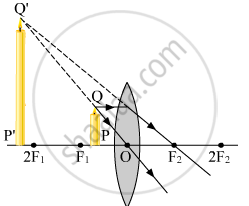
When the object is placed between the focus F1 and 2F1 a magnified inverted image is formed as shown below.
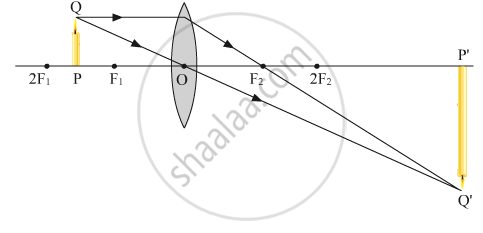
APPEARS IN
संबंधित प्रश्न
If you focus the image of a distant object, whose shape is given below, on a screen using a convex lens, the shape of the image of this object on the screen would be:
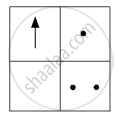
(a)
(b)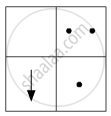
(c)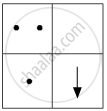
(d)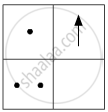
A 1 cm high object is placed at a distance of 2f from a convex lens. What is the height of the image formed?
In order to obtain a real image twice the size of the object with a convex lens of focal length 15 cm, the object distance should be:
(a) more than 5 cm but less than 10 cm
(b) more than 10 cm but less than 15 cm
(c) more than 15 cm but less than 30 cm
(d) more than 30 cm but less than 60 cm
What is the position of image when an object is placed at a distance of 10 cm from a convex lens of focal length 10 cm?
The diagram alongside shows the refraction of a ray of light from sir to a liquid.
(a) write the values of (i) angle of incidence, (ii) angle of refraction.
(b) use snell’s law to find the refractive index of liquid with respect to air.
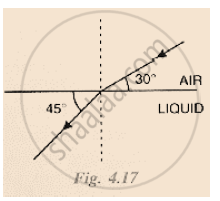
State the position of object, position of image, nature of image when: Convex lens is used in observing biological specimens.
Define the principal focus of a convex lens.
Which of the following statements is true?
- In which type of microscope do you find the lens arrangement as shown in the following diagram?

- Write about the working and the use of this microscope.
Distinguish between:
Concave lens and Convex Lens
